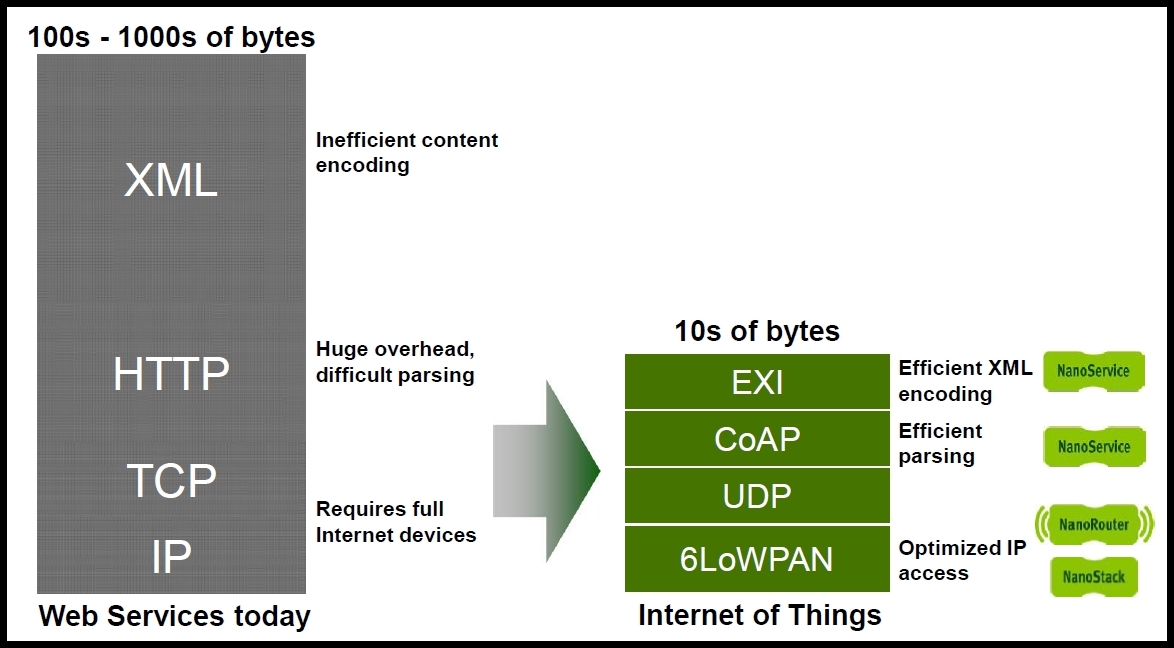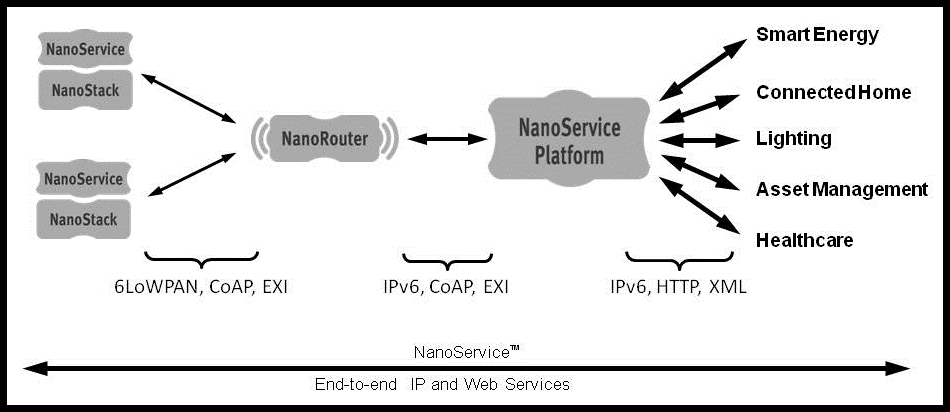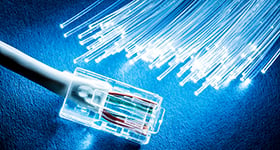I’m going to make a semi-subjective division into things that have significant resources, like smart phones, and those that do not, like security and other sensors that would make up a networked home. But I’m going to start with a reminder about the fact that a regular cellular network takes 21 signaling messages to wake up an idle smartphone, tell it to become active, check who you are, change your status in its database, allocate an IP address and finally set-up a dedicated connection. This means that networks are carrying a high overhead when the device may only be receiving a short instant message.
There is a workaround solution. See “Smart Networks for Smart Phones”. However, network congestion becomes a significant, intrinsic issue when it comes to the many other “things” that are set to drive M2M traffic up to unsustainable levels. The industry is talking about billions of networked sensors on land, in the sea, air and space that will support a vast range of new Web services. In Holland, for example, sensors are being used to check the health and fertility status of cows, each one of which will transmit 200MB a year!
The issue is intrinsic because a typical payload may be under 30 bytes but the communications overhead can be 500 to 600 bytes: well over an order of magnitude. This comes from the fact that today’s Web services protocol stack was developed for the kind of traffic generated by computers. See figure 1. What’s needed, and it’s coming onto the radar screen, is software that’s optimized for resource-constrained environments, specifically, the protocol stack on the right.

Figure 1. Architecture of the “Embedded Web”. See below for an explanation of the new acronyms. (Don’t you just love 6LoWPAN?).
Oulu: a small town in Finland
Oulu is a small town (140k inhabitants) that is close to the Arctic Circle. The University has been a center of wireless excellence for many years and over that time there have been numerous spinoffs, one of which was Sensinode. This company initially focused on low-power, RF sensor networks; they wrote the first drafts of IP over low power RF back in 2002; and have been a driving force behind 6LoWPAN and CoAP. In other words, they have a solid track record and today their software will run on every device in the smart grid, and all other M2M and wireless sensor network markets.
Where would we be without acronyms?
IEEE 802.15.4 is a standard that specifies the physical layer and media access control for low-rate wireless personal area networks (LR-WPANs). It is the basis for the ZigBee and other wireless specifications. 6LoWPAN stands for IPv6 over Low power Wireless Personal Area Networks. It has to be IPv6 because billions of new devices are going to be connected to the Net.
UDP (User Datagram Protocol) is part of the IP suite. It allows computer applications to send messages (datagrams) without requiring prior communications to set up special transmission channels or data paths. You can think of it as “Lite” TCP.
CoAP (Constrained Application Protocol) is a transport protocol analogous to HTTP, but optimized for constrained networks and nodes for M2M apps such as smart energy and building automation. EXI stands for Efficient XML Interchange.
Low-power networks and the networked home
The first networks were based on proprietary technology: even the radios. Therefore while the networked home was a nice concept, it didn’t get off the ground. ZigBee networks are based on standards: see “ZigBee Comes of Age", but we now have ZigBee IP, which is used in embedded nodes and it employs 6LoWPAN as its network layer. The addition of IP means that sensor networks in the home can access the Net via a gateway. This is the key that will unleash the networked home as well as other low-power RF networks.

Figure 2. NanoServices are end-to-end Web services optimized for resource-constrained devices. NanoStack is a 6LoWPAN stack that runs on embedded nodes. The NanoRouter is a software solution for concentrators/routers. It routes between 6LoWPAN and IPv6/IPv4. The NanoService Platform manages very large networks of M2M nodes and enables rapid application development and deployment.
The key drivers
According to Sensinode, utilities are one of the driving forces behind this development. In the US they foresee the deployment of 20 devices per home and there are over 100 million homes: the math could hardly be simpler. Around two billion connected devices adds up to a formidable market and they have documented the need for IP and Web Services for The Internet of Things.
Managing networks with hundreds of millions of nodes may not be something enterprises or M2M service providers see as a core competency. This creates an opportunity for companies to support this infrastructure with a Software-as-a-Service, or via the Cloud model. Sensinode plans to offer a cloud-based service model as well as direct licensing of its software.
Want to learn more about M2M technologies? Then be sure to check out the M2M Evolution conference, collocated with TMC’s ITEXPO West 2011, taking place Sept. 13-15, 2011, in Austin, Texas. The M2M Evolution Conference is for those industry professionals interested in capitalizing on a rapidly growing segment of the telecom industry. The M2M Evolution Conference embraces the any-to-any strategy of the Internet today. Co-sponsored by TMC Partner Crossfire Media, it showcases the solutions, and examines the data strategies and technological requirements that enterprises and carriers need to capitalize on a market segment that is estimated to grow to $300 Billion in the year ahead. To register, click here.
Bob Emmerson is TMC's European Editor. To stay abreast of the latest news affecting the European market, check out Bob's columnist page.
Edited by
Jennifer Russell





